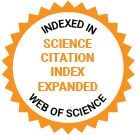Journal of Medical Internet Research
The leading peer-reviewed journal for digital medicine and health and health care in the internet age.
Editor-in-Chief:
Gunther Eysenbach, MD, MPH, FACMI, Founding Editor and Publisher; Adjunct Professor, School of Health Information Science, University of Victoria, Canada
Impact Factor 5.8 CiteScore 14.4
Recent Articles

Research efforts are growing rapidly in the digital health industry, but with this growth comes increasing ethical challenges. In this viewpoint paper, we leverage over 20 years of combined experience across academia, industry, and digital health to address critical issues related to ethics, specifically privacy policies and institutional review board (IRB) compliance, which are often misunderstood or misapplied. We examine the purpose of privacy policies and IRBs, provide brief examples where companies faced legal and ethical consequences due to shortcomings, and clarify common misconceptions. Finally, we offer recommendations for digital health companies to improve their ethical practices and ensure compliance in a rapidly evolving landscape.

The escalating prevalence of obesity worldwide increases the risk of chronic diseases and diminishes life expectancy, with a growing economic burden necessitating urgent intervention. The existing tiered approach to weight management, particularly specialist tier 3 services, falls short of meeting the population’s needs. The emergence of digital health tools, while promising, remains underexplored in specialized National Health Service weight management services (WMSs).

The use of health-related online peer support groups to support self-management of health issues has become increasingly popular. The quality of information and advice may have important implications for public health and for the utility of such groups. There is some evidence of variable quality of web-based health information, but the extent to which misinformation is a problem in online peer support groups is unclear.

Emergency departments (EDs) face significant challenges due to overcrowding, prolonged waiting times, and staff shortages, leading to increased strain on health care systems. Efficient triage systems and accurate departmental guidance are critical for alleviating these pressures. Recent advancements in large language models (LLMs), such as ChatGPT, offer potential solutions for improving patient triage and outpatient department selection in emergency settings.

Artificial intelligence (AI) is increasingly used in medical care, particularly in the areas of image recognition and processing. While its practical use in other areas is still limited, an understanding of patients’ needs is essential for the practical and sustainable implementation of AI, which could further acceptance of new innovations.

The integration of diverse clinical data sources requires standardization through models such as Observational Medical Outcomes Partnership (OMOP). However, mapping data elements to OMOP concepts demands significant technical expertise and time. While large health care systems often have resources for OMOP conversion, smaller clinical trials and studies frequently lack such support, leaving valuable research data siloed.

Tracking the performance of activities of daily living (ADLs) using ADL recognition has the potential to facilitate aging-in-place strategies, allowing older adults to live in their homes longer and enabling their families and caregivers to monitor changes in health status. However, the ADL recognition literature historically has evaluated systems in controlled settings with data from younger populations, creating the question of whether these systems will work in real-world conditions for older populations.

Young children often get sick, and although they usually do not need treatment, it can be distressing for parents and lead to a high rate of urgent health care use. As the demand for out-of-hours services grows, understanding parents’ concerns and needs when caring for an ill child is crucial for designing interventions that support informed health-seeking decisions.


Chronic obstructive pulmonary disease (COPD) is a common and progressive respiratory condition characterized by persistent airflow limitation and symptoms such as dyspnea, cough, and sputum production. Acute exacerbations (AE) of COPD (AE-COPD) are key determinants of disease progression; yet, existing predictive models relying mainly on spirometric measurements, such as forced expiratory volume in 1 second, reflect only a fraction of the physiological information embedded in respiratory function tests. Recent advances in artificial intelligence (AI) have enabled more sophisticated analyses of full spirometric curves, including flow-volume loops and volume-time curves, facilitating the identification of complex patterns associated with increased exacerbation risk.

Persisting sex- and gender-based disparities in access to high-quality, personalized health care in the United States can lead to devastating outcomes with long-lasting consequences. Strategic use of virtual resources could expand equitable health care access for women. However, optimal approaches and timing for individualized, virtually delivered health care for women are unclear.

Influenza viruses are major pathogens responsible for acute respiratory infections in humans, which present with symptoms such as fever, cough, sore throat, muscle pain, and fatigue. While molecular diagnostics remain the gold standard, their limited accessibility in resource-poor settings underscores the need for rapid, cost-effective alternatives. Routine blood parameters offer promising predictive value but lack integration into intelligent diagnostic systems for influenza subtyping.
Preprints Open for Peer-Review
Open Peer Review Period:
-
Open Peer Review Period:
-
Open Peer Review Period:
-
Open Peer Review Period:
-
Open Peer Review Period:
-
















